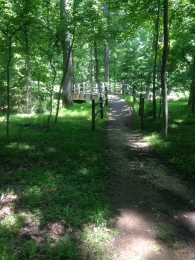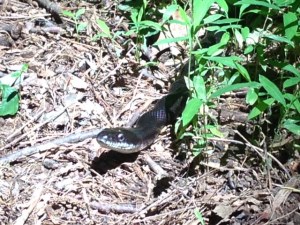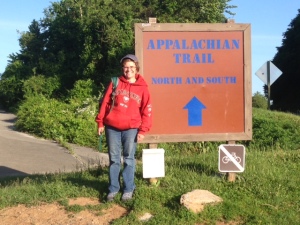The Washington, DC area has a wealth of great hiking trails. Tod and I are learning just how lucky we are to have so many options close to home. Today we went to Little Bennett Regional Park, in Clarksburg, Maryland. This was our first visit, even though the park is about 15-20 minutes away from home.
The park has trails that snake around one another and intersect in some areas. Tod and I decided to start out from the Browning Run Parking Area and go west along the Browning Run Trail. As we went from a wild flower area into the forest we were met by a chorus of singing birds, all vying for our attention (or maybe the attention of their fellow birds!) The woods were beautiful. The trails are very smooth and easy to navigate, except for areas of mud. (These trails are probably not the best place to hike after a few days of rain.)
Except for a couple of bikers, a pair of horses, and a group of hikers, we had the trails to ourselves. We saw very few animals, with the exception of a very tiny (one inch) frog and a few tadpoles. My favorite part, as always, was crossing a creek.
Our hike included Browning Run Trail, northwest along Western Piedmont Trail, north along Pine Grove Trail, east along Timber Ridge Trail, continuing along Tobacco Barn Trail, then to Western Piedmont trail again (going southeast) to Kingsley Trail, to Purdum Trail and back to Browning Run Trail. As you can see, this is not the place to go for an easy circuit. While some of the trail intersections were very well marked, some places were not. We came to several forks in the trail and had to take an educated guess about what to do next. (Tip: download a map of the park and take it with you!)
The trails range from narrow, with thick vegetation, to meadows full of flowers (and bees), to park roads. There is a bit of everything here!
Although a little complicated to navigate, we really liked this park and will definitely be back again. Its a great place for folks who want to tailor their hike to a length that best meets their needs.
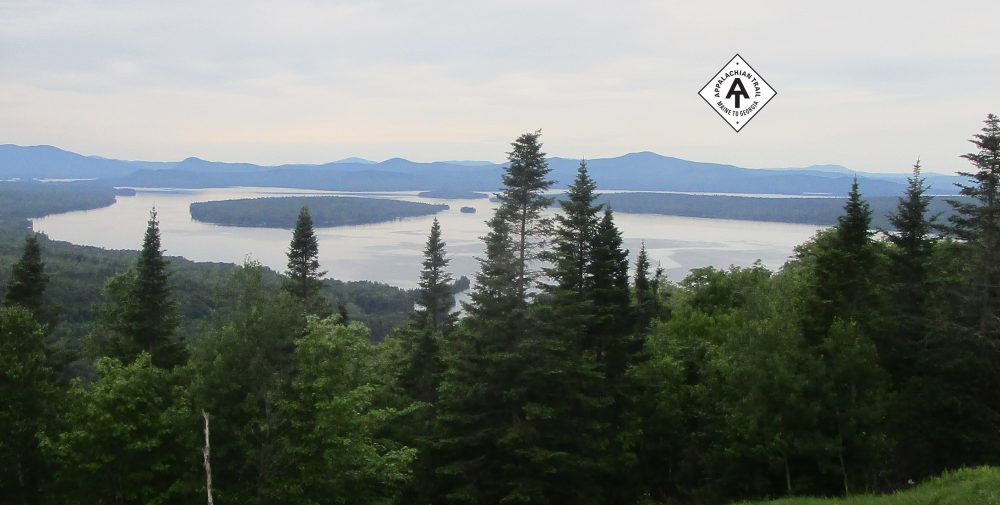





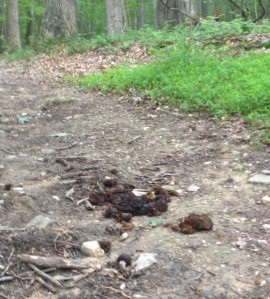
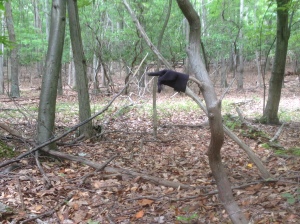





 It seems unlikely that one can make a circuit of 5.3 miles among trees and brush in Greenbelt, just off I-495, the Washington Beltway. Yet here, in Greenbelt Regional Park, Karen and I found this preserved spot of nature. The goldenrod-blazed Perimeter Trail makes its way, for the most part, within earshot of the freeway, among tall trees and adjacent to Still Creek and Deep Creek, which the trail crosses at several places by being carried above the eroded landscape on wooden bridges.
It seems unlikely that one can make a circuit of 5.3 miles among trees and brush in Greenbelt, just off I-495, the Washington Beltway. Yet here, in Greenbelt Regional Park, Karen and I found this preserved spot of nature. The goldenrod-blazed Perimeter Trail makes its way, for the most part, within earshot of the freeway, among tall trees and adjacent to Still Creek and Deep Creek, which the trail crosses at several places by being carried above the eroded landscape on wooden bridges.